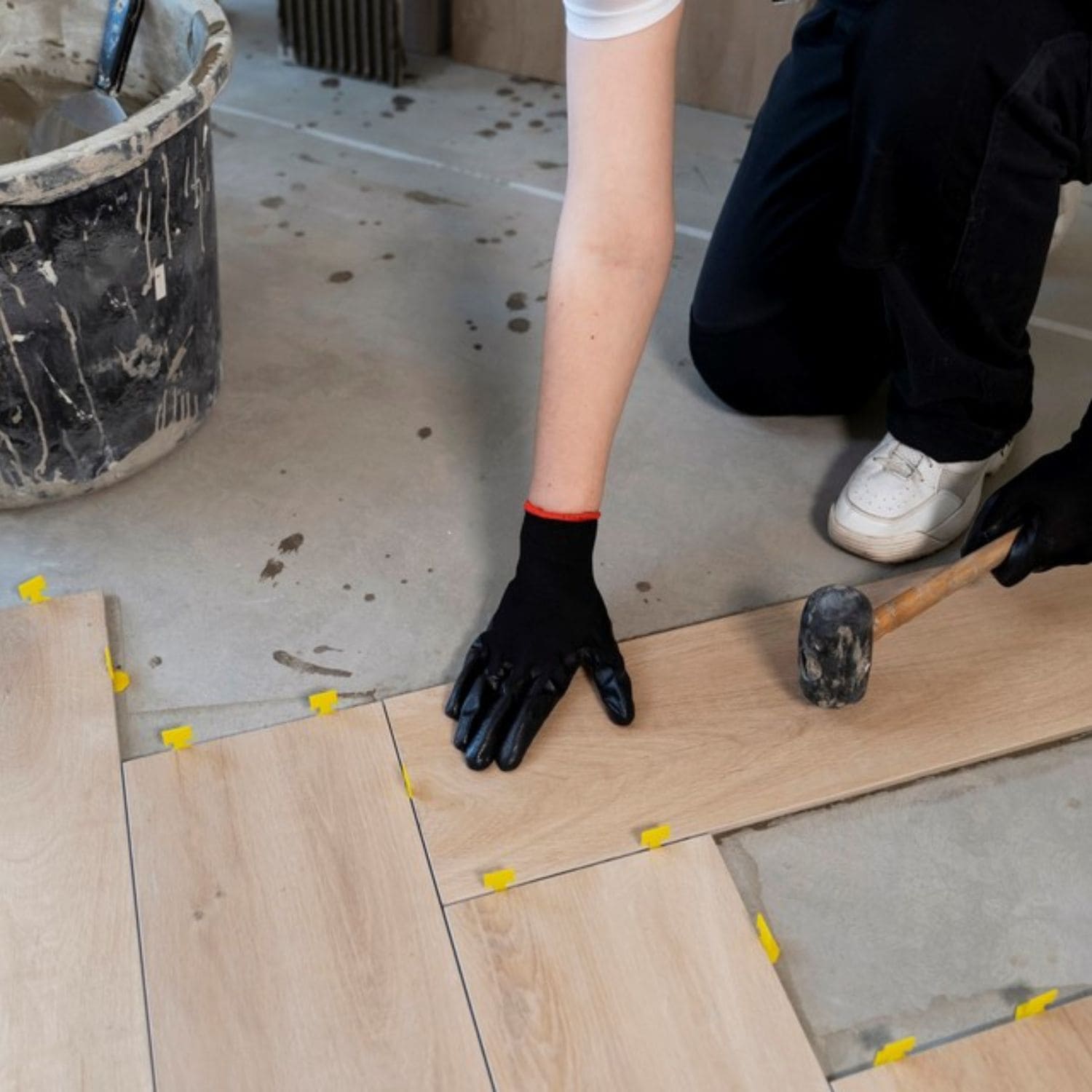Screeding sand is an important element in the construction and landscaping industries. It is used to create a flat surface for paving bricks or concrete, ensuring that the final product is both aesthetically pleasing and structurally sound. However, not all sand is suitable for screeding, and there are many different factors to consider when choosing the right screed.
In this article, Australiatiler will give you everything you need to know about screeding sand, including what it is, why it’s used, the different types available, and how to choose the right one for your project. your. Let’s get started!
See more: 5 Benefits Of Using Screeding In Your Construction Projects
WHAT IS SCREEDING SAND?
 Screeding sand
Screeding sand
Screeding sand is a type of sand that is commonly used for leveling surfaces before laying bricks, pavers, or concrete. It is usually coarse sand with a grain size between 0.1mm and 2mm or more and contains a small amount of clay or silt to improve its binding properties. When used for screeding, the sand is spread evenly over the surface and leveled with a straight edge or screed board to create a smooth, flat, and level base for the construction material. It is important to use the correct type of sand for screeding to ensure the stability and durability of the surface over time.
See more: How to Screed Sand for Pavers
IMPORTANCE OF SCREEDING SAND IN CONSTRUCTION
Here are some of the key reasons why screeding sand is important:

Screeding the floor with screeding sand
- Leveling: One of the primary uses of screeding sand is to level out the surface of a floor. This is important because any unevenness in the surface can cause problems down the line, such as tripping hazards or problems with the adhesion of the flooring material.

The floor is more solid when it is lined with smooth sand
- Stability: Screeding sand also helps to create a stable base for the flooring material. This is important because it ensures that the flooring will not shift or move over time, which can cause damage or create safety hazards.

Sand is used to regulating drainage and ensure the durability of the floor
- Water drainage: Screeding sand can be used to create a slope that allows water to drain away from the surface. This is important in areas that are prone to flooding or moisture buildup, as it helps to prevent water damage and mold growth.
- Durability: Using screeding sand can help to increase the durability of the flooring material by providing a solid base that can withstand wear and tear over time.
TYPES OF SCREEDING SAND

Types of screeding sand
There are several types of screeding sand, including sharp sand, soft sand, and building sand.
- Sharp sand is coarse sand with angular particles and is commonly used for screeding floors and paving.
- Soft sand, on the other hand, has smoother particles and is often used for plastering and rendering.
- Building sand is a mixture of sharp and soft sand and is commonly used for general building purposes, including screeding.
There are also specialist types of screeding sand, such as self-leveling screed sand and rapid-set screed sand, which are designed for specific applications.
FACTORS TO CONSIDER WHEN CHOOSING SCREEDING SAND
When choosing screeding sand, there are several factors to consider, including:
1.Particle size

The particle size of the sand should be consistent and appropriate for the type of screed being used. Typically, the ideal particle size range for screeding sand is between 0.3mm and 2.5mm.
2. The shape of particles

The shape of the sand particles can affect the flow and workability of the screed. Angular particles tend to interlock and create a more stable screed, while rounded particles can result in a more fluid mix that may be easier to work with.
3. Moisture content
The moisture content of the sand can impact the hydration of the binder in the screed mix. The sand should be dry to the touch and free of any moisture that could affect the consistency of the mix.
4. Chemical composition

The chemical composition of the sand can impact the strength and durability of the finished screed. For example, sand that is high in salt content can lead to efflorescence, a white crystalline deposit that can appear on the surface of the screed.
5. Availability and cost

Local availability should be considered to reduce transportation costs and lower environmental impact. Additionally, the cost should be reasonable, and reflective of the quality of the sand being purchased.
CONCLUSION
Hopefully, the information we bring will help you have an overview of the screeding sand and make use of it to have a perfect construction. It is important to choose the right sand, ensure the correct moisture content, and follow the right application techniques to achieve a flat and smooth surface.
In addition, Australiatiler also provides screeding and tiling services for your floors with guaranteed quality and affordable prices. Quickly contact us via the hotline at 041515999 or visit our website Australiatiler to receive the best advice and offers.
Refer to some useful articles from Austrailiatiler below:
See more: Everything You Need to Know About Screeding Mix: Tips and Techniques
See more: Should or shouldn’t the floor be screeding with sand and cement before laying floor tiles?




